Claygent in 2025: How Clay's AI Research Assistant Works
From Manual Research to AI Automation: Understanding Claygent’s Impact on Sales Workflows
Blogby JanApril 23, 2025
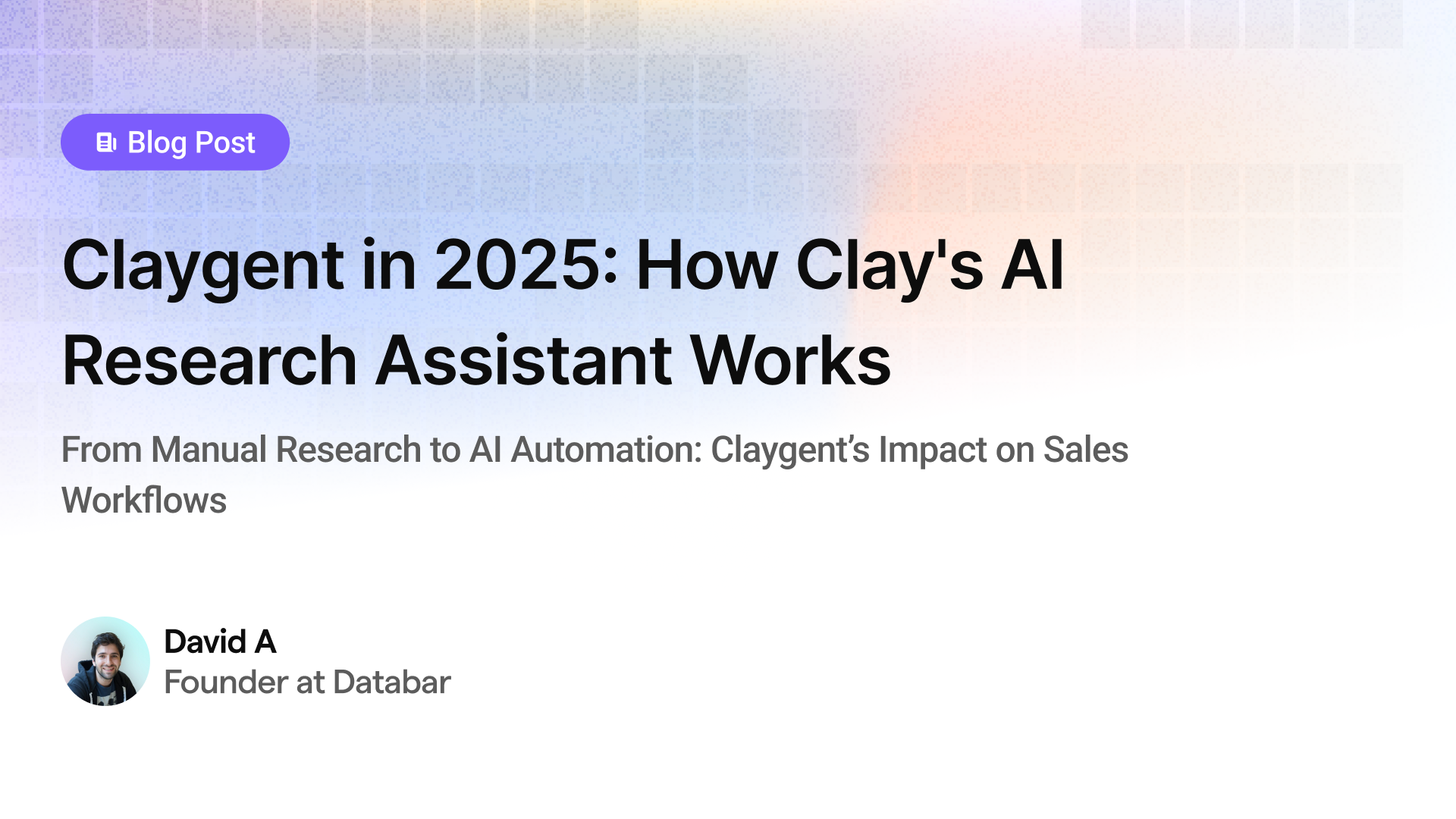
Claygent is changing how sales and marketing teams conduct prospect research in 2025. As the AI research assistant within Clay's data enrichment platform, it's designed to automate time-consuming research tasks that traditionally required hours of manual work. But what exactly is Claygent, how does it work, and does it deliver on its promises?
In this comprehensive guide, I'll break down everything you need to know about Claygent – from its underlying technology and key capabilities to practical applications and limitations. Whether you're considering using Claygent or just curious about AI research assistants, this analysis will help you understand what makes this tool stand out.
What is Claygent?
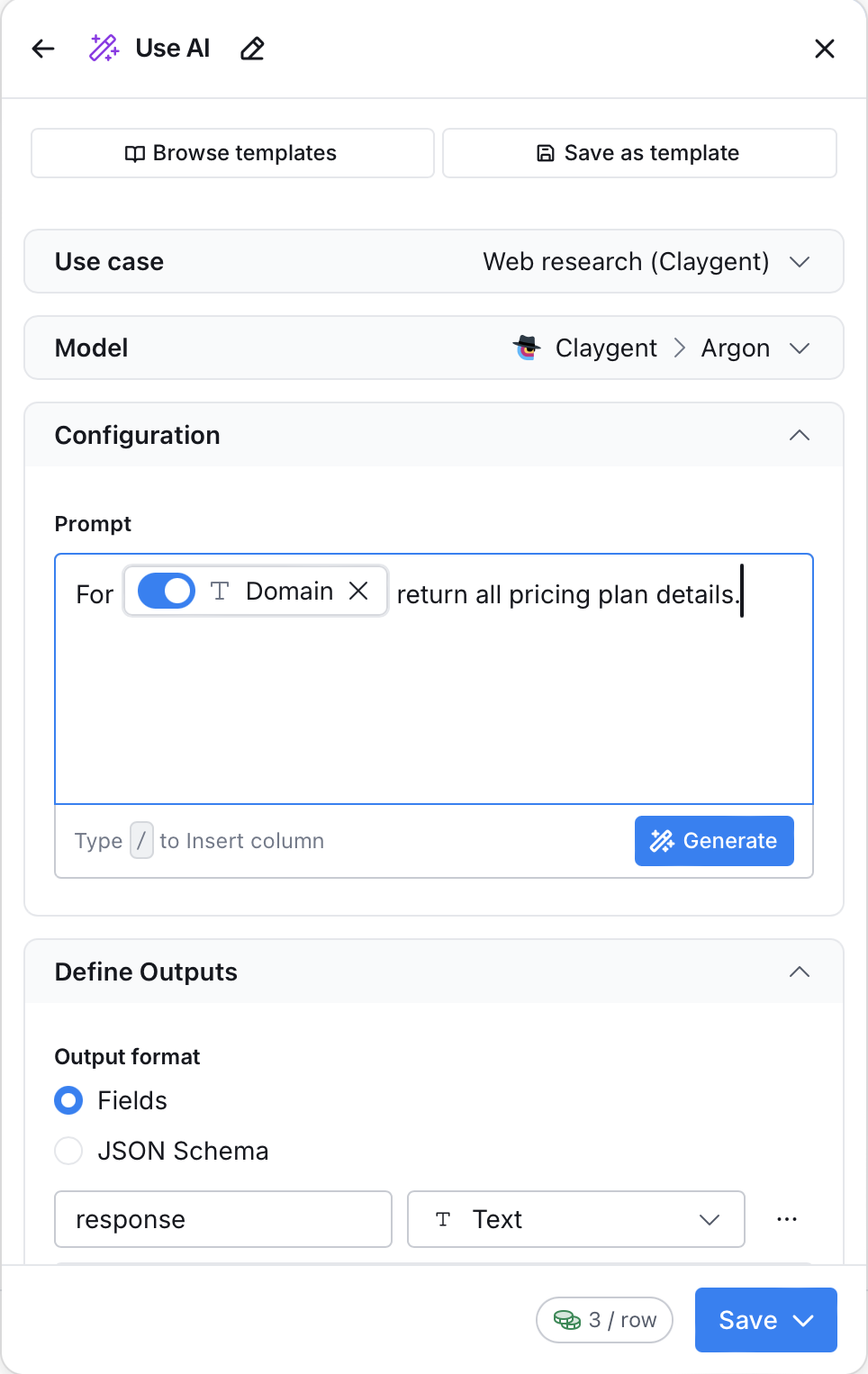
Claygent is Clay's proprietary AI research assistant that was first introduced in 2023 and has since evolved significantly. At its core, Claygent is designed to automate the research process that sales, marketing, and recruitment professionals typically perform manually when qualifying prospects or candidates.
Unlike basic data enrichment tools that simply fill in missing contact details from established databases, Claygent can actively search the web, analyze company websites, process social media profiles, and extract contextually relevant information that helps users understand not just who a prospect is, but what matters to them professionally.
The AI assistant integrates directly within Clay's table-based interface, allowing users to trigger automated research tasks with a few clicks or natural language commands. For example, a sales representative could ask Claygent to "find recent news about this company's funding rounds" or "identify the company's pricing structure" and the AI would automatically conduct this research across multiple sources.
Claygent represents Clay's effort to move beyond simple data enrichment into what they call 'intelligent research automation' – using AI to not just gather data, but to synthesize and contextualize information in ways that support meaningful business decisions and personalized outreach. Understanding how this AI assistant fits within Clay's broader platform requires familiarity with Clay's overall approach and competitive positioning.
How Claygent Works: The Technology Behind the AI
Based on publicly available information about Claygent and similar AI research tools, we can understand the general technological approach that powers this type of AI assistant:
Natural Language Processing (NLP)
Claygent appears to utilize NLP technology to understand user queries, interpret website content, and extract relevant information from unstructured text. This allows the AI to process various types of content it encounters during research, from company blog posts to LinkedIn profiles.
The system likely has specialized capabilities for understanding business terminology and industry-specific language, which helps identify relevant information even when it's embedded within complex technical content or industry jargon.
Web Crawling and Data Collection
For Claygent to conduct research, it needs to access information from across the web. Like most research assistants in this category, Claygent likely employs web crawling technology to access publicly available information from websites, respecting standard ethical and legal boundaries such as robots.txt files and website terms of service.
This technology allows the system to gather information from common business platforms like company websites, public business databases, news sources, and professional profiles.
Large Language Model Integration
In 2025, AI research assistants including Claygent typically leverage large language models (LLMs) to process and synthesize collected information. These models help generate insights from collected data, summarize findings, and draft content based on research discoveries.
The LLM component enables these tools to handle complex instructions and provide analyses of the information gathered, such as identifying key themes in news coverage or recognizing significant business developments.
Data Processing and Structuring
AI research assistants like Claygent typically employ data processing systems that clean and normalize data gathered from various sources, identify and structure key information points, transform unstructured content into usable data, prioritize findings based on relevance, and integrate new information with existing data. This processing helps ensure that automated research results in actionable, accurate data that integrates with the user's existing information.
Key Claygent Capabilities in 2025

Since its initial release, Claygent has continuously evolved. Here's a breakdown of its key capabilities as of 2025:
Company Research and Analysis
Claygent excels at comprehensive company research, collecting information beyond what's typically available in standard B2B databases. The tool can identify which technologies a company uses, from CRM systems to marketing tools, helping sales teams target prospects with complementary or replacement solutions. It can gather information about funding rounds, investors, and revenue estimates, providing valuable context for sales prioritization and conversation starters. Claygent analyzes how companies position themselves in their market by examining their messaging, competitor comparisons, and value propositions. Additionally, the assistant can find and summarize recent news about target companies, identifying potential trigger events for sales outreach.
Contact Discovery and Enrichment
Beyond basic contact details, Claygent can build rich profiles of individual prospects. By analyzing LinkedIn profiles, company websites, and other sources, Claygent can determine a contact's actual responsibilities beyond just their job title. The AI tracks career progression to provide insights into a prospect's professional background and potential decision-making authority. Claygent finds articles, posts, and presentations created by prospects, identifying their professional interests and expertise. The assistant can also analyze public social media activity to identify potential conversation starters or shared connections.
Personalized Outreach Support
Claygent helps users craft more effective, personalized communications. Based on research findings, Claygent can suggest relevant conversation starters tailored to each prospect's interests or recent professional activities. The AI can automatically modify email templates with prospect-specific details gathered during research. Users can ask Claygent to investigate specific questions about a prospect, like "What initiatives is this CMO currently focused on?" or "Has this company made any recent acquisitions?"
Practical Applications: Claygent in Action
To better understand Claygent's capabilities, let's explore some practical ways sales and marketing professionals are using it in 2025:
Scenario 1: Account-Based Sales Development
A B2B SaaS sales team targeting enterprise accounts uses Claygent to build detailed account maps before reaching out. They begin by importing a list of target companies into Clay. Then they trigger Claygent to research each company's current strategic initiatives from recent earnings calls, technology stack mentioned to identify potential integration points, and organizational structure to map decision-makers.
For each identified decision-maker, they use Claygent to analyze recent activity and published content, research their speaking engagements and professional interests, and identify shared background elements. Based on this research, Claygent helps them craft personalized outreach sequences addressing specific pain points and referencing relevant professional interests.
This process, which would traditionally take hours per account, is largely automated through Claygent, allowing the team to scale their personalized approach across dozens of accounts simultaneously.
Scenario 2: Event-Based Marketing
A marketing team uses Claygent to maximize ROI from industry conferences. They import the speaker and attendee list from an upcoming conference, then Claygent researches each attendee, categorizing them by fit with ideal customer profile, recent funding or growth indicators, and technology needs based on job postings and online content. The team uses these insights to plan targeted pre-event outreach, customize booth conversations, and prioritize networking opportunities.
Challenges with AI Research Tools Like Claygent
While Claygent offers impressive capabilities, it's important to understand common challenges that affect AI research tools in this category as of 2025:
Data Recency and Availability Issues
AI research tools like Claygent rely on information they can access online, which creates inherent limitations. Information may be outdated if websites haven't been updated recently. Recent job changes might not be reflected if profiles haven't been updated promptly. Additionally, private companies with minimal online presence pose significant research challenges for any AI system, regardless of its sophistication. This limitation affects most platforms, as detailed in our Clay competitors analysis, highlighting the importance of combining AI automation with human expertise.
Accuracy and Interpretation Challenges
Like all AI research tools, accuracy varies based on the type of information being gathered. Information extracted from structured data sources (like LinkedIn profiles) tends to be highly accurate across all platforms. However, interpretations of unstructured content (like blog posts or news articles) can sometimes miss nuance or context. Industry-specific terminology in niche sectors might be misinterpreted by AI systems that lack specialized training in those verticals.
This highlights the importance of selecting research tools with domain-specific training and validation capabilities that can better understand industry context.
Resource and Efficiency Considerations
Using AI research assistants typically consumes credits or other resources within their respective platforms:
Complex research tasks require significant computational resources, which translates to higher credit consumption Multi-step research workflows across many prospects can quickly deplete monthly allocations Users need to balance comprehensive research against resource limitations.
Some newer platforms have improved efficiency by making their research algorithms work better, so they get similar results using less resources. Our detailed Clay review looks at how different platforms manage the trade-off between research quality and resource use.
Learning Curve and Implementation Challenges
Despite improvements to user interfaces, effectively using AI research tools still requires significant investment:
Users need to understand how to structure research requests for optimal results Teams must develop knowledge of which research operations deliver the best ROI Organizations need capabilities to interpret and apply the research findings appropriately
This learning curve is an industry-wide challenge, though its impact varies significantly between platforms, with some solutions like Databar.ai focusing specifically on reducing time-to-value through more intuitive interfaces and guided workflows.
Setting Up and Optimizing Claygent
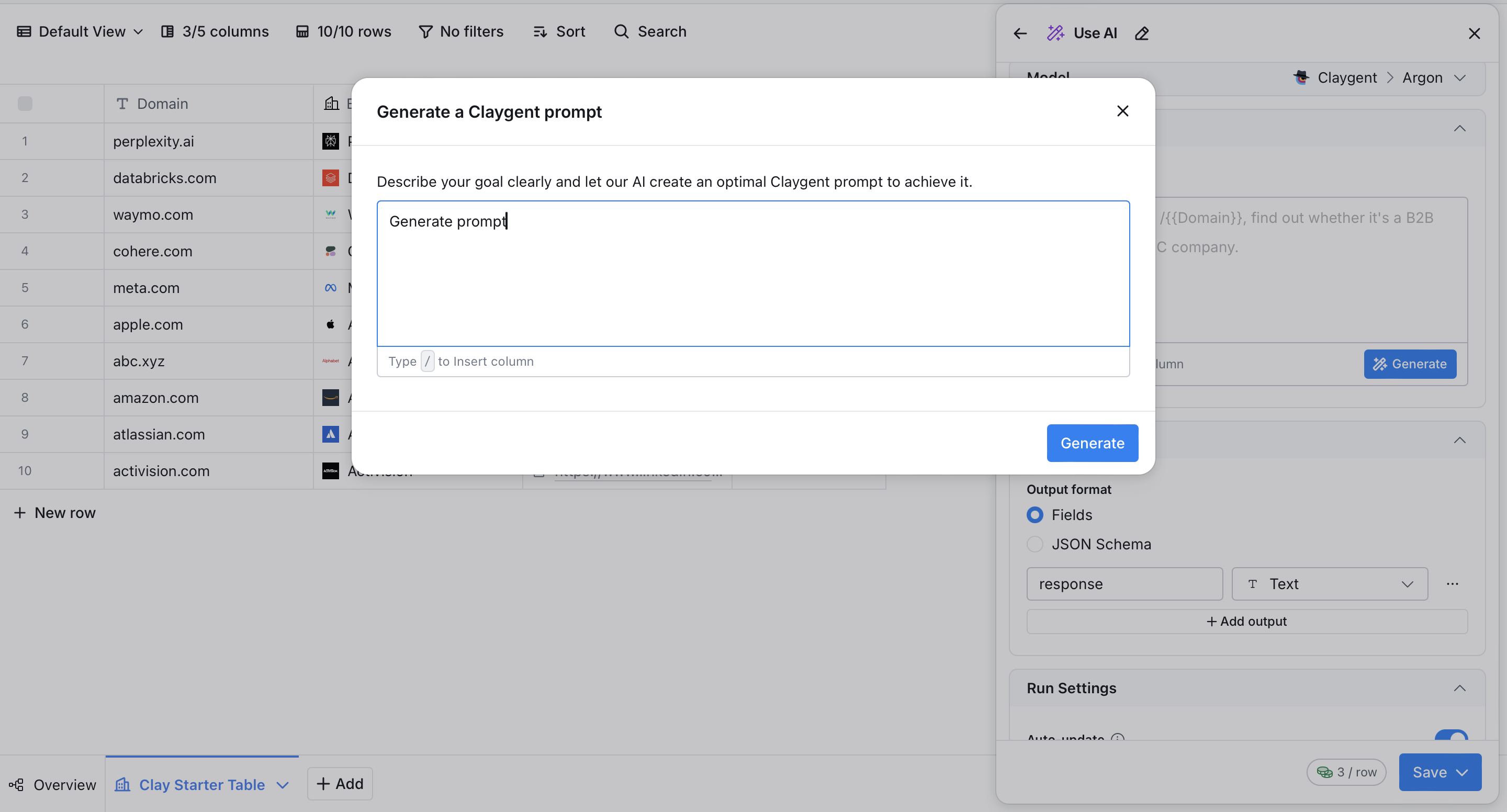
To get the most value from Claygent, users should follow these best practices:
Effective Query Formulation
How you instruct Claygent significantly impacts the quality of results. Be specific instead of asking "Find information about this company," specify "Identify this company's top 3 strategic initiatives based on their recent press releases and earnings calls." Provide context by letting Claygent know why you need the information, such as "I'm preparing for a sales call and need to understand their current challenges in customer retention." When relevant, set parameters by including timeframes or limits, like "Find funding announcements from the past 6 months" or "Identify the top 5 decision-makers in their marketing department."
Creating Efficient Research Workflows
To maximize credit efficiency, structure your research processes carefully. Start broad, then narrow by beginning with general company research before diving into specific contacts or questions. Use progressive research stages by creating connected tables that build upon previous findings rather than starting from scratch. Save successful queries—when you find effective research instructions, save them as templates for future use. Leverage filtering by using Clay's filtering capabilities to narrow down which contacts warrant deep Claygent research.
Integrating with Existing Processes
Claygent works best when integrated thoughtfully into your existing workflows. Connect with your CRM by setting up automatic exports to push Claygent's research findings into your CRM as contact or account notes. Create research schedules for key accounts by scheduling periodic Claygent research refreshes to identify new trigger events. Combine with human expertise by using Claygent for initial research, then having team members validate and interpret the findings. Develop standard research protocols by creating standardized research sequences for different types of prospects or accounts.
How Claygent Compares to Other AI Research Tools
To provide context, let's compare Claygent with other AI-powered research solutions available in 2025:
Claygent vs. Databar.ai's AI Research Assistant
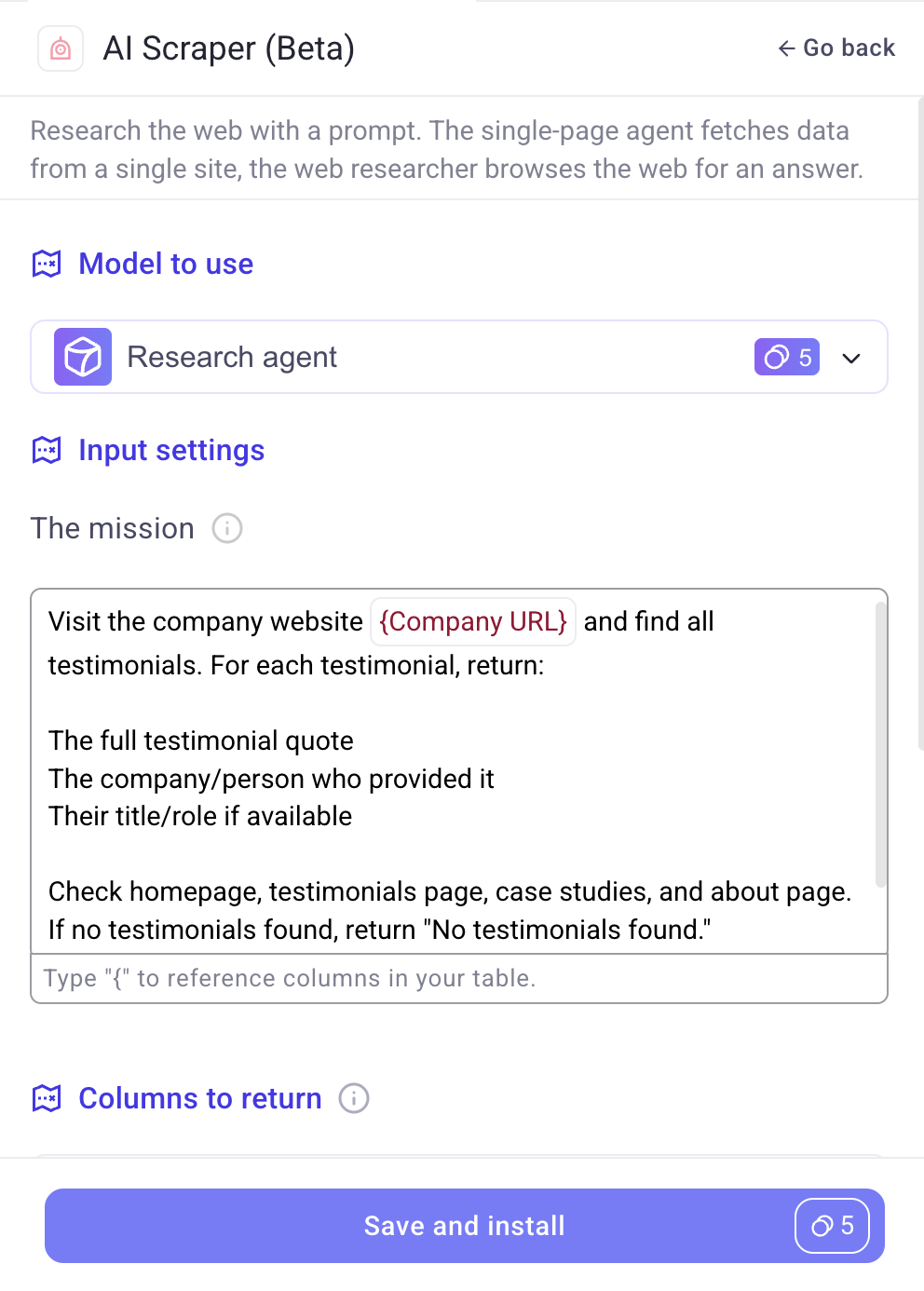
Databar.ai offers its own AI-powered research assistant with capabilities that compare favorably to Claygent:
Databar.ai's AI research agent provides comprehensive company and contact research capabilities similar to Claygent. The Databar.ai research assistant focuses on faster time-to-value with a simpler interface that requires less setup and learning. Both tools can analyze websites and news sources, but Databar.ai's solution is designed for greater efficiency in credit usage. Both tools can generate insights and personalized outreach suggestions, though Databar.ai prioritizes a more intuitive user experience.
Claygent vs. General AI Assistants
While tools like GPT-4 and Claude offer impressive AI capabilities, Claygent differs in important ways:
Claygent is purpose-built for B2B sales and marketing research, with specialized knowledge of business contexts. Unlike general AI assistants, Claygent can actively crawl websites and conduct live research rather than relying solely on training data. Claygent integrates directly with Clay's data structure, allowing findings to be immediately actionable within prospect lists.
Claygent vs. Standalone Research Tools
Several specialized research tools exist in the market, but Claygent offers unique advantages and tradeoffs:
Claygent's tight integration with Clay's data enrichment capabilities provides a more unified workflow than separate research tools. Standalone research platforms sometimes offer deeper vertical-specific research capabilities for particular industries. Claygent's credit-based pricing model can be more cost-effective for teams with moderate research needs compared to subscription-based standalone tools.
Is Claygent Worth It?
After thoroughly examining Claygent's capabilities, the key question is whether it provides sufficient value to justify its cost and learning curve. Here's my assessment based on different organizational needs:
Claygent Works Best For:
Enterprise Sales Teams with Long Sales Cycles: For teams selling complex solutions with multiple stakeholders and extended sales processes, Claygent's ability to conduct deep research on accounts and contacts can significantly improve personalization and relationship-building.
Account-Based Marketing Programs: Organizations running targeted ABM campaigns will find Claygent's comprehensive account research capabilities valuable for creating highly tailored messaging and content.
Organizations with Research-Heavy Processes: Teams that already invest significant time in manual research will see the most immediate ROI from Claygent's automation capabilities.
Teams with Technical Resources: Organizations with the technical capacity to optimize and customize Claygent workflows will extract more value from the tool's extensive capabilities.
Alternatives May Be Better For:
High-Volume Sales Teams: Organizations prioritizing outreach volume might find Claygent's credit consumption and setup requirements create bottlenecks in their process. Databar.ai's more efficient credit utilization and easy-to-use interface may offer a better solution for high-volume needs.
Organizations with Limited Budgets: The credit consumption of comprehensive Claygent research might strain limited budgets, especially for small teams or startups. Databar.ai offers comparable research capabilities with more efficient credit usage.
Specialized Industry Research: For some highly specialized industries, purpose-built vertical research tools might provide more relevant insights than Claygent's generalized approach.
Value Calculation
To determine if Claygent is worth the investment for your specific situation, consider this calculation:
Estimate the number of hours your team currently spends on manual research per month Multiply by the average hourly cost of those team members Compare this cost to the additional Clay credits consumed by Claygent research Factor in the potential quality improvement in outreach and resulting conversion rates
For many organizations, this calculation reveals that Claygent can provide positive ROI, particularly when factoring in opportunity costs and improved conversion rates from better-informed outreach. However, it's worth comparing this ROI against alternatives like Databar.ai that offer similar capabilities with potentially lower implementation costs and faster time-to-value.
The Bottom Line: Is Claygent Right for Your Research Needs?
Claygent represents a significant advancement in how AI can support B2B sales, marketing, and recruitment research. While it's not a perfect solution for every organization, its ability to automate complex research tasks and uncover valuable insights about prospects continues to improve with each update.
For teams willing to invest in learning its capabilities and optimizing their research workflows, Claygent can dramatically reduce the time spent on manual research while improving the quality and personalization of outreach efforts. However, organizations should carefully consider their specific needs, budget constraints, and team capabilities when evaluating whether Claygent or an alternative AI research assistant best suits their requirements.
Looking for a more intuitive AI research assistant with better cost efficiency? Databar.ai offers a powerful alternative with complete AI-powered research capabilities similar to Claygent, but with a faster learning curve. Try Databar.ai free today!
In case you're wondering how we compare to other data tools, here's how our AI research capabilities and data access compare to other platforms:
- Databar.ai vs Clay - Detailed comparison of the leading data enrichment tools
- Databar.ai compared to Clearbit - User-friendly platforms vs API-focused solutions
- How we enhance vs Cognism - Accessible workflows vs enterprise implementation complexity
- Our AI research vs Clay Alternatives - Modern automation vs traditional enrichment methods
Related articles

Buying Signals & Intent Data: Why Your CRM Is Missing the 5 Accounts
Why Most Teams Miss Their Hottest Prospects (And How to Fix Your Signal Detection)
by Jan, October 06, 2025

Lead Scoring & Account Segmentation: Why Most CRMs Get This Backward (And How to Fix It)
How to build a system that tells your team who to call, when, and why
by Jan, October 06, 2025
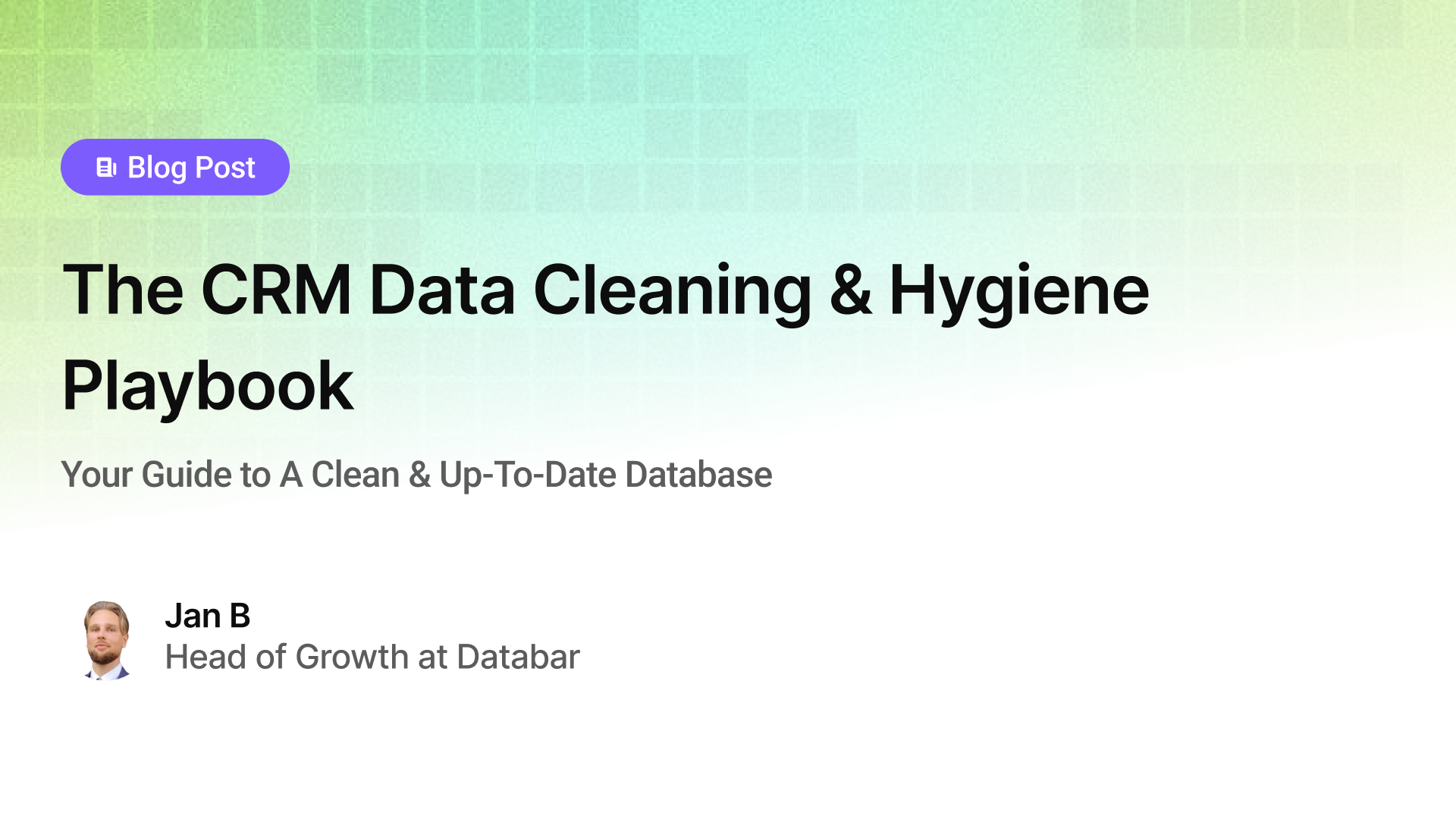
The CRM Data Cleaning & Hygiene Playbook
Your Guide to A Clean & Up-To-Date Database
by Jan, October 04, 2025
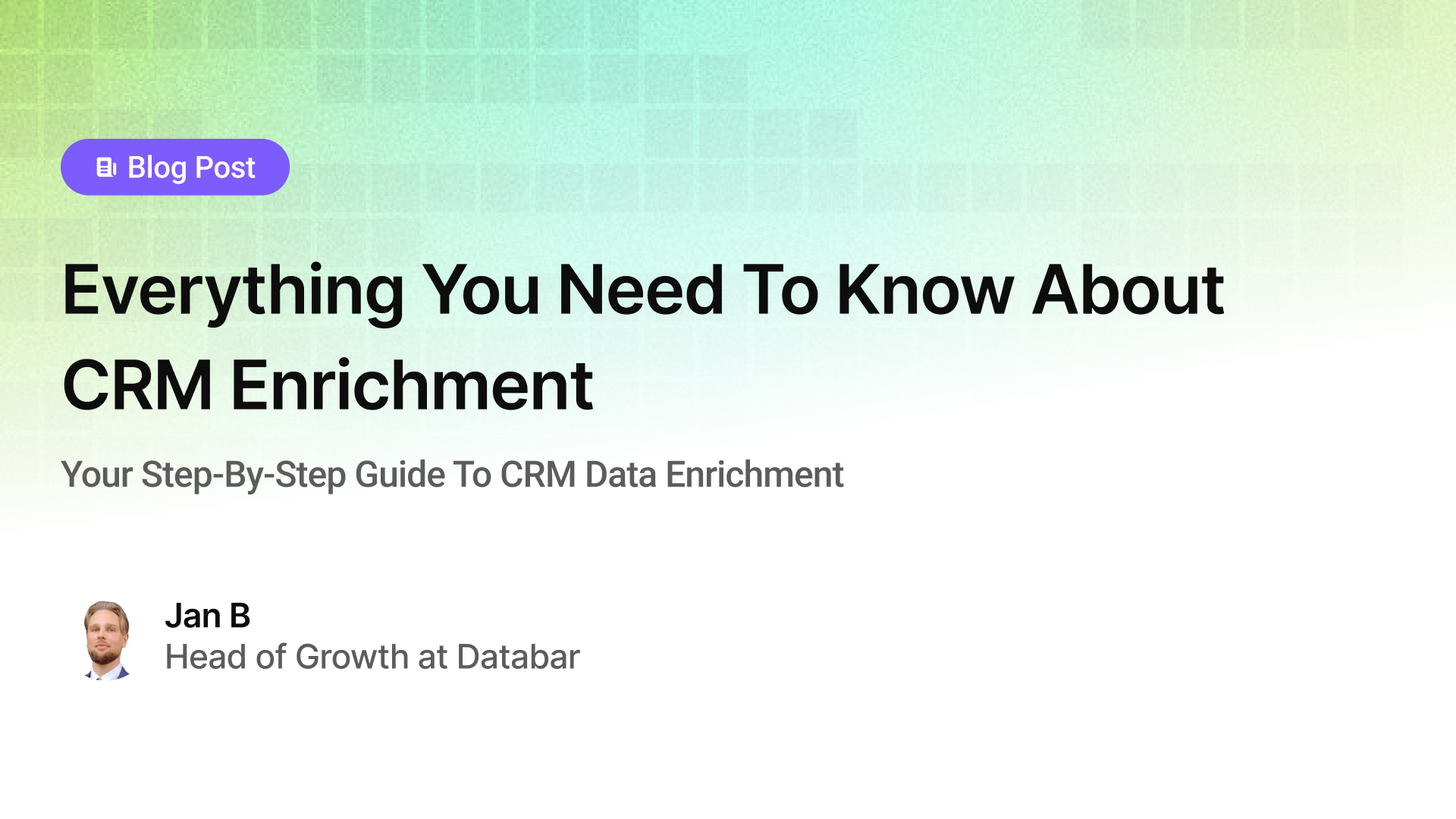
Everything You Need To Know About CRM Enrichment
Your Step-By-Step Guide To CRM Data Enrichment
by Jan, October 03, 2025
